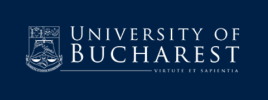An Examination of Governance Typology in Nigeria Higher Education System
DOI:
https://doi.org/10.14276/2285-0430.2292Abstract
Nigeria higher education institutions (NHEIs) are facing a number of challenges that border on corporate governance (CG) practices. CG includes the issues of autonomy and accountability. In developed and developing countries, autonomy is being extended to HEIs for flexibility in fulfilling the mandate of teaching, research and community service. This paper explores CG culture and its challenges in NHEIs. A qualitative survey research method was employed through structured interviews of selected NHEIs key stakeholders and extensive desk-based research. The results of the interviews and content analysis of operational documents of selected high ranking NHEIs revealed the adoption of corporate governance structures and processes. The study also recognised the non-existence of disclosure of CG practice. Challenges such as inadequate funding, excessive interference by government, domineering influence of unions, faulty composition of CG constituents and poor leadership are some factors affecting effective governance in these institutions. Consequently, proper funding, leadership training, empowerment of these institutions and complete and periodic disclosure of application of CG practices are recommended.
Key words: Corporate governance; Nigeria higher education institutions; Stakeholders.
References
Abdulazeez, D.A; Ndibe, L. and Mercy, A. (2011). Corporate governance and financial performance of listed money banks in Nigeria, Journal of Accounting and Marketing, 5, 1, 2-16
Ahmad, S. (2013). Availability of funds and utilization in Federal University of Technology in North-East Zone of Nigeria, Multidisciplinary Journal of Science, Technology and Vocational Education, 2,1, 80-90.
Ahmad, S. And Adepoju, O.A. (2013). Meeting the challenges of funding university in Nigeria, in P.K. Ojedelu, M.O. Arikewuyo, and A.C. Njoku (Eds), Challenges of education in Nigeria,708-724.
Ahmad, S. (2015). Public-private higher education financing in Nigeria, European Scientific Journal, 11, 7, 92-109.
Arora, A. and Sharma, A. (2016). Corporate governance and firm performance in developing countries; Evidence from India, Corporate Governance, 16, 2, 420-436.
Asadullah, M.A. & Ullah, A.Z. (2018). Socio-economic contributions of vocational education and training: An evidence from OECD countries, Industrial and Commercial Training, 50, 4, 172-174.
Astrachen, J.H. (2010) Strategy family business: Toward a multidimensional research agenda: Journal of Family Business Strategy, 1, 6-14.
Basheka, B. C (2015). Best practices on corporate governance of higher education institutions.
Bergan, S. (2003). Students participation in higher education governance. Council of Europe, www.cve.int/t/dg4/highereducationgovernance
Bernett, R. (1997). Higher education: a critical business. Buckingham, The society for research university press.
Blenche, I. and Kogan, K. (2007).Organization and governance in universities Portal. Unesco.org/education/eu/files.
Blevins, P.D., Eckart, R. and Ragozzino, R. (2018). An investigation of link between governance and performance in non-profit organizations, Academy of Management Proceedings, 1, 1-9.
Bolden, R.G., Petror, G. and Gosling, J. (2008). Developing collective leadership in higher education. London leadership foundation for Higher Education. http:www/thea.c. research.
Bontis, N. and Sevenko, A (2007). The moderating role of human capital management practices on employees capabilities. Journal of Knowledge management 11, 3, 31-51.
Bryman, A.E. and Bell, E. (2011). Business research methods. United Kingdom Oxford University Press.
Brandley, K (1997). Intellectual capital and the new wealth of nations.Business Strategy Review, 8, 1, 53-62.
Clark, B. (1998). Creating entrepreneurial universities: organisational pathway of University Paris and Oxford. International Association of Universities, Elservier Press.
Clark, B.R. (1983). Higher education system? Academic organisations in crossnational perspective. University of Califonia Press Barkie.
Council of European Unions (2014). Conclusions on efficient and innovative education and training. Retrieved from http://www.consilium.euro.eu/uedoes/
Creswell, J. (1994) Research Design: Qualitative and Quantitative Approaches. Thousand Oaks: Sage Publications.
Crous, T. (2017). Corporate governance in south Africa higher education institutions. Ph.d thesis, School of Accounting, Faculty of Economics and Management, University of Freetown, South Africa.
Dabiri W. B (2012). Corporate accountability ADNEWS Monthly pp 28-32.
Davis, G. F (2005). New dimension in corporate governance. Annual Review of Sociology, 31, 1, 143-162.
Davis, J, H; Schoorman, F. D and Donaldson, L (1997). Towards a stewardship theory of management. American Management Review, 22, 1, 20-47.
De Boer, H, Hisman, J., Klemper, A. Vander Menten, B., Neavo, G., Theiseins, H Vandev
Wender (2002). Academia in the 21stCentary. An analysis of trends and perspective in higher education and research, AWT.Achterground 28. The Hagu: Advier and voor het. Wetenschags-en.
Deloitte (2014). The 2014 Global Report.
Ekundayo, H.J. and Ajayi, A. (2009). Towards effective management of university education in Nigeria, International N.G.O. Journal, 4, 8, 342-347.
Fried, J. (2006). Higher education governance in Europe: Anotomy, ownership, and accountability: A review of literature in J. Kohler and J. Haber (eds) Higher education governance between democratic culture, academic opportunity and market forces, Council of European, Strasburg, 179-133.
Garcia-Meca, E., Garcia-Sanchez, A. and Martinez-Ferrew, J. (2015). Board diversity on its effect on bank’s performance: An international analysis, Journal of Banking and Finance, 53, 202-214.
Hanard, F. and Alexander, M. (2015). Governance and quality guidelines in higher education: Areview on governance arrangements and quality assurance guidelines. United Kingdom OECD Paris.
Hoy, W. K., Gage, C. Q., III, & Tarter, C. J. (2006). School Mindfulness and Faculty Trust: Necessary Conditions for Each Other? Educational Administration Quarterly, 42(2), 236-255.
Iruonagbe, C. and Egharveba, M. (2015). Higher Education in Nigeria and the emergence ofprivate universities.International journal of Education and Research. 3(2).
Issa, A and Muhammad, A (2014). Corporate governance in Nigeria higher education: Issues and challenges. European Journal of Business and Management, 16, 2, 221.
Jackling, B. and Johl, S. (2009). Board and firm performance: Evidence from India’s top companies. Corporate Governance. An International Review, 17, 4, 492-509.
Jacoby, J. (2005). Maximizing shareholder value: a new ideology for corporate governance. Corporate Governance and Society Challenge.48 (4).
Jaja, M. J (2013). Higher education in Nigeria: Its gain, its burden. Global Journal of Human Social Science, Linguistics and Education, 13, 4.
Johnson, G; Scholes, K and Whittington, R (2008). Exploring corporate strategy: Text and Cases. U.S. Prentice Hall.
Johnson, E.A. (2013). Recommendation for good governance in Denmark Committee for University Boards in Demarks, Copertnaugen.
Kazmi, A (2008). Strategic management and business policy. Tata McGraw Hill Publishing Company.
Keenan, J and Aggestan, M (2001). Corporate governance and intellectual capital: Some /Conceptualizations. Corporate Governance: An International Review, 9, 4, 259-275.
Kezar, A., & Sam, C. (2012). Governance as a Catalyst for Policy Change: Creating a Contingent Faculty Friendly Academy. Educational Policy, 28(3), 425-462.
Khan, H (2011). A literature review of corporate governance. International conference on E-business. Management and Economics, 25, 1-5.
Lawal, A. A (2008). Ethics and integrity: Imperators for economic reforms. Nigerian Academy of Management 2, 1, 123-137.
Lauzzaretti, L. and Tavoletti, E. (2006). Governance shifts in higher education: A cross national comparison, European Educational Research Journal, 5, 1, 18-26
Mustapha, Y. and Nofiu, A. (2017). The relationship between board structure variable and performance of listed manufacturing firms in Nigeria, International Journal of Economic Behavior, 7, 1, 131-147.
Momoh, O. A and Ukpong, M. S (2013). Corporate governance and its effect on the Nigerian Insurance Industry, European Journal of Globalization and Development Research, 8, 1,1-12
Middlehust, R. (2004). Changing internal governance: A discussia of leadership, roles and management structures in U.K. universities, Higher Education, Quarterly, 58, 4, 258-279.
National Policy on Education (2004). Federal Ministry of Education. National Educational Research Development Council.
Nazar, R. Chandhry, I.S. and Faheem, M. (2018). Role of quality education for sustainable development goals, International Journal of Social Science, 4, 2, 486-501.
Naubauer, F. And Lank, A. (1998). The Family business: its governance for sustainability. Macmillan Press Ltd Houndmills, 105-67
Obasan, K, A (2014). Impact of Corporate governance on organizational profitability. Fountain Journal of Management and Social Science, 3, 2, 11-22.
Obiyo, O, C and Lencee, L (2011). Corporate governance and firm performance in Nigeria. International Journal of Research in Commerce and Management, 1, 4, 1-12.
Ogunruku, O.O. (2012). University administration in the 21st century: a new direction. Ile-Ife: Obafemi Awolowo University press.
Olson, G. A. (2009, July 23). Exactly What Is 'Shared Governance'? Retrieved February 27,2016, from http://chronicle.com/article/Exactly-What-Is-Shared/47065/
Oso, L and Semiu, B (2012). The concept and practice of corporate governance in Nigeria. The need for public relations and effective corporate communication, Journal of communication, 3, 1, 1-16.
Oyejide, T.A. and Soyibo, A. (2001). Corporate governance in Nigeria. A paper presented at the Conference on Corporate Governance, Accra, Ghana, 29-30, Jan.
Pandey, I.M. (2004). Governance of higher education, Vikalpa, 29, 2, 79-85
Pucciarelli, F. and Kaplan, A. (2016). Competition and strategy in higher education: managing complexity and uncertainty, Business Horizon, 1-10.
Popescu, M. (2011) The attitudes importance for the Students education, International Journal of Economic Behavior 1, 1, 53-61.
Ritchie, J., Lewis, J., Nicholls, C. & Ormston, R. (2014). Qualitative research practice: A guide for social science students and researchers. United Kingdom Natcen National Center for Social Research.
Rhoades, G. (2005). Capitalism, Academic Style, and Shared Governance. Academe, 91(3), 38.doi:10.2307/40252785
Salmi, J. (2009). The challenge of establishing world class universities. World Bank Washington D.C.
Salmi and A.M. Verspoor (eds) Revitalising higher education, Perganon, Oxford
Salami, S.O. (2009). Emotional intelligence, self-efficacy, psychological well-being and students’ attitudes: implication for quality education. European Journal of Education Studies.12 (3).
Sanda, A; Mukailu, A and Garba, T (2005). Corporate governance mechanisms and firm financial performance in Nigeria Financial Report. Presented at the Biennial Research Workshop of AERC Nairobi, Kenya pp 22-29.
Saunders, M, Lewis, P. &Thornhill, A. (2015). Research methods for business students. (12thEd). New York: Pearson Publisher.
Shattock, M. (2006). Good governance in higher education. United Kingdom: Open University Press Mc Graw Hill
Sarbah, A and Xiao, W. (2015) Good Corporate governance Structures” A must for family businesses, Journal of Business and Management 3, 40-57.
UIS/OECD (2003). Financing education investment and return: Analysis of the World of Educational indicators 2002 Edition Paris UNESCO/OECD.
Uwigbe, O. R (2013). Corporate governance and share price index: Evidence from listed firms in Nigeria. Africa Research Review, 7, 2, 129-143.
Wrapper, L and Loot, I (2003). Corporate governance, investor protection and performance in emerging markets. Journal of Corporate Finance, 19, 5, 1-26.
Villain, M.L., Normand, A. Gibson, E. Hazelkorn, E. Pankowska, P. (2014). Governance and adaptation on innovation modes. http.wwwhe.gov.
Vught, F. A. (2009). Autonomy and accountability in government university relationship in J. Yang, C. (2015). The Effects of Higher Education’s Institutional Organizational Climate on Performance Satisfaction: Perceptions of University Faculty in Taiwan. IBR International Business Research, 8(8).
Yin, R. (2003). Case study research: Design and methods. Sage Publications Incorporation.
Zagorchev, A. and Gal, L. (2016). Corporate governance and performance of financial institutions, Journal of Economics and Business, 82, 17-41.
Downloads
Published
How to Cite
Issue
Section
License
L'opera è pubblicata sotto Licenza Creative Commons -CC Attribution-ShareAlike 4.0
Accepted 2020-08-31
Published 2019-05-31



